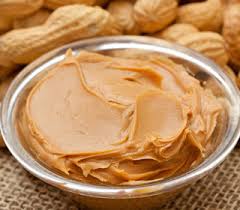You just cannot manage your diabetes effectively without paying attention to your diet. A proper diet plays a big role in managing blood sugar and weight. Peanut butter is a snack consumed by people every day. It is eaten with whole grain toast, sandwich, whole grain crackers and other foods. Then you may wonder whether peanut butter is suitable for people with diabetes. Keep reading you will find the answer.

Can Diabetics Eat Peanut Butter?
Yes, they can. Actually, peanut butter and diabetes work great together. The reason is that peanuts have a low glycemic index of 14. So eating peanut butter does not lead to a spike in blood sugar. Peanut butter is a low-carb food which can help keep the blood sugar levels under control. It is also loaded with protein and unsaturated fat which can keep you feeing full and satisfied for a longer time. But you should bear in mind that peanut butter tends to be high in calories due to the unsaturated fat. Depending on your size and calorie goals, 1 to 2 tablespoons of peanut butter is the proper portion for diabetics.
The Nutrition Facts of Peanut Butter
In order to get a better idea about the connection between peanut butter and diabetes, it is important to learn a bit more about the nutrition facts of peanut butter.
Peanut butter is a nutritional powerhouse when it is in its natural form with no sweeteners, added fats, or sugars. You can get about 12g of healthy fats from two tablespoons of peanut butter with 8g of protein. It has no cholesterol and is low in carbs (7g per serving). Two tablespoons of peanut butter contain 200 calories, which is 10% of your daily caloric need if you are on a 2,000-calorie diet. So remember to limit your intake.
Benefits of Peanut Butter to Diabetics
Now you must know that peanut butter is a safe choice for diabetics. Come find more about its benefits.
1. It Lowers Blood Sugar
Peanut butter and diabetes do not contradict with each other. Eating peanut butter without exceeding the recommended serving size actually helps lower your blood sugar. That happens because peanuts are a low GI food which can help control glucose levels in your system. When peanut butter is consumed with breakfast, it helps keep hunger pangs at bay for up to 12 hours afterward.
2. It Prevents Type II Diabetes
Proper management of Type I diabetes is important to keep it from becoming Type II diabetes. Peanut butter helps in this regard, as eating 5 teaspoon of peanut butter a week reduces your risk of developing type II diabetes by 20%. The unsaturated fat and low amount of saturated fat enables peanut butter to lower the risk of type II diabetes. Peanut butter also contains magnesium and fiber that help reduce insulin resistance in the body, which again reduces your risk of this disease.
3. It Reduces Heart Disease Risk
You are 2-4 times more likely to develop heart disease if you have diabetes, even if it is properly managed and controlled. Including peanut butter and other healthy foods to your diet may help lower the risk. That is mainly because peanut butter contains monounsaturated fats that lower your cholesterol and improve blood circulation. Peanut butter also contains phytochemicals that work as antioxidants in your body and prevent free radical damage. This in turn reduces your risk of heart disease.
Precautions for Choosing Peanut Butter
While peanut butter and diabetes go well together, you need some guidelines to choose the proper peanut butter. For instance:
- Opt for all-natural peanut butter.
- Avoid low-fat peanut butter because it comes with added sugar that increases the carb content.
- Avoid going for less expensive peanut butters that may contain hydrogenated oils or trans fats.
- Never buy peanut butter without reading ingredient labels.
- Avoid consuming peanut butter with white bread and instead spread one or two tablespoons on whole grain crackers, some fruits, or a slice of whole grain toast.
Other Healthy Foods for Diabetics
Just like peanut butter, there are some other healthy food choices for people with diabetes. For instance:
- Include healthy carbs in your diet. Opt for veggies, fruits, legumes, whole grains, and low-fat dairy products.
- Include fiber-rich food in your diet. It helps regular your blood sugar levels and lowers your risk of heart disease. Opt for fruits, vegetables, whole-wheat flour, nut, wheat bran, beans, peas and lentils.
- Include heart healthy fish in your diet. Eat fish like mackerel, salmon, sardines, tuna, or bluefish at least twice a week. Avoid fried fish and fish with high levels of mercury, such as swordfish, tilefish and king mackerel.
- Opt for foods rich in good fats. Foods rich in mono- and polyunsaturated fats are pecans, almonds, avocados, walnuts, olive oil and canola oil.
